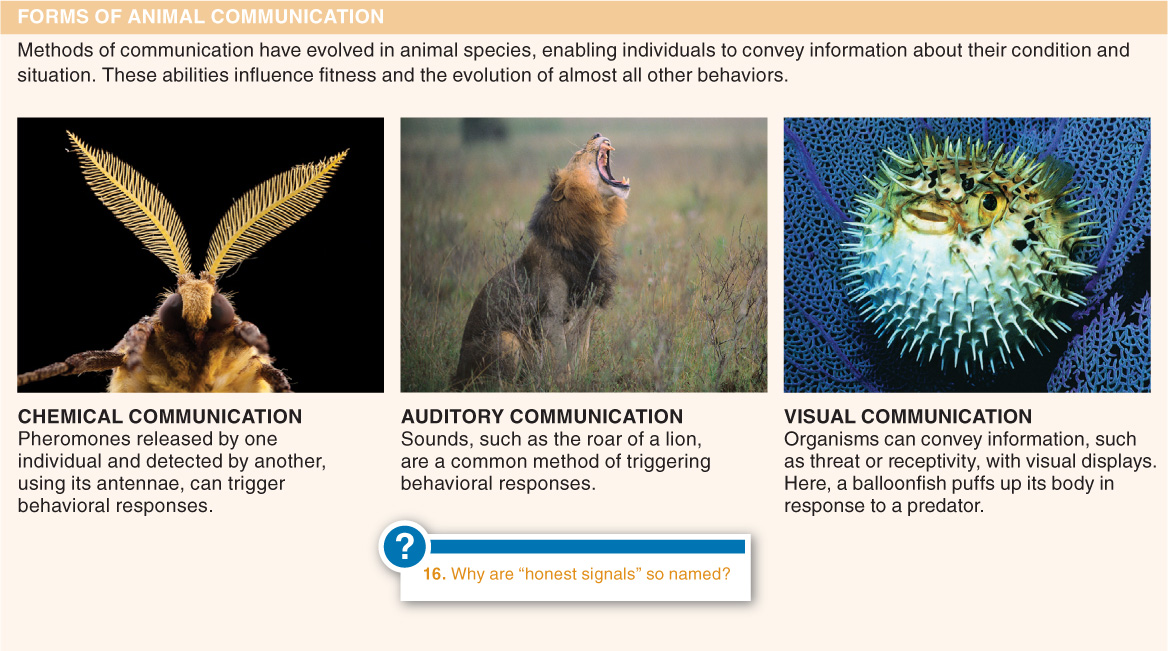9.17–9.18
9.17–Communication and the design of signals evolve.
The challenge of communication is central to the evolution of animal behaviors.

Q
Relative to birds, more mammalian species are:
- a) polygynous.
- b) monogamous.
- c) polyandrous.
- d) hermaphroditic.
- e) sexually monomorphic.

In a species such as pigeons, in which males are almost indistinguishable in appearance from females, the most likely mating system is:
- a) monomorphism.
- b) monogamy.
- c) polygyny.
- d) polyandry.
- e) It is impossible to predict the mating system with only this information.

If you find a species of fish in which males are much more brightly colored and larger than females, what might you infer about their mating system?
- a) The degree of sexual dimorphism does not give any information about the mating system.
- b) They are simultaneous hermaphrodites.
- c) They exhibit parallel monogamy.
- d) They are serially monogamous.
- e) They are polygynous.

Polygynous species:
- a) usually employ external fertilization.
- b) are usually sexually dimorphic, with males larger and more highly ornamented.
- c) are usually sexually dimorphic, with females larger and more highly ornamented.
- d) usually have males and females that are physically indistinguishable.
- e) are more commonly found among birds than among mammals.
